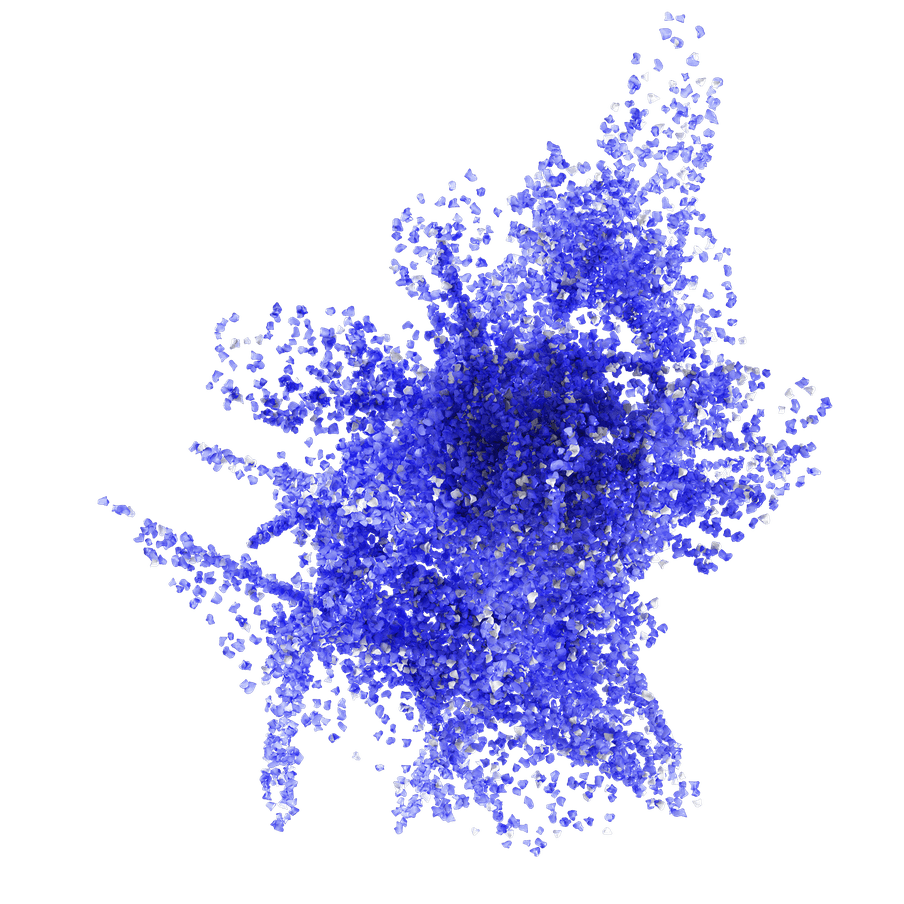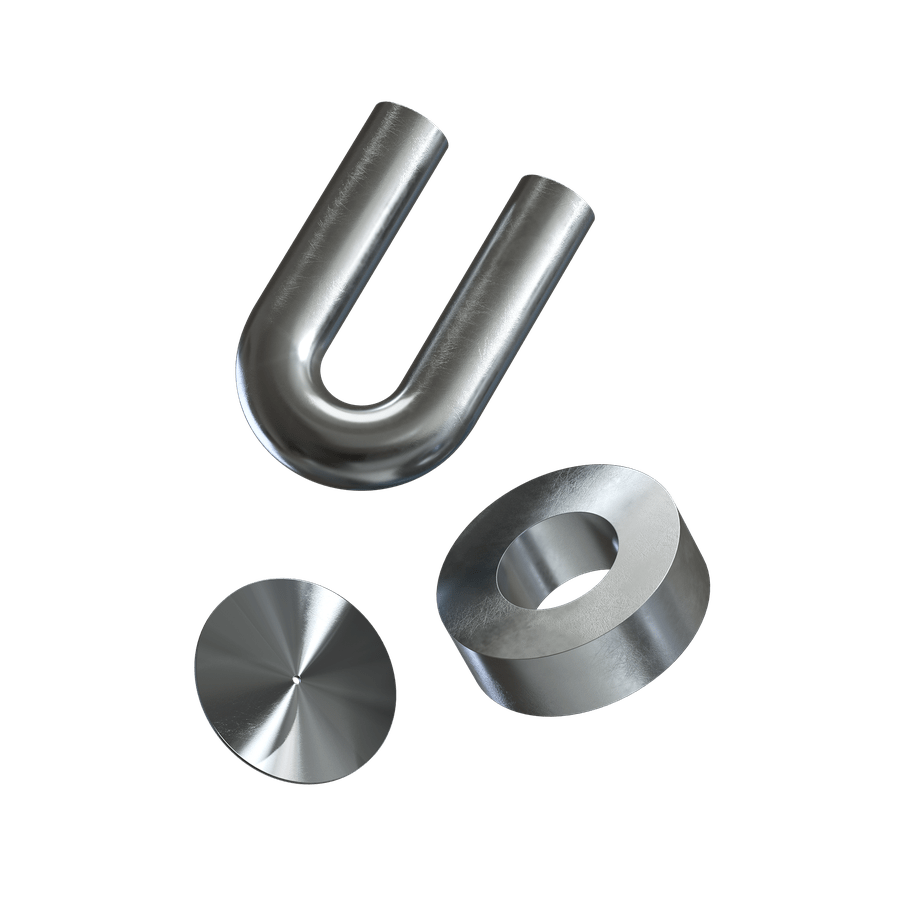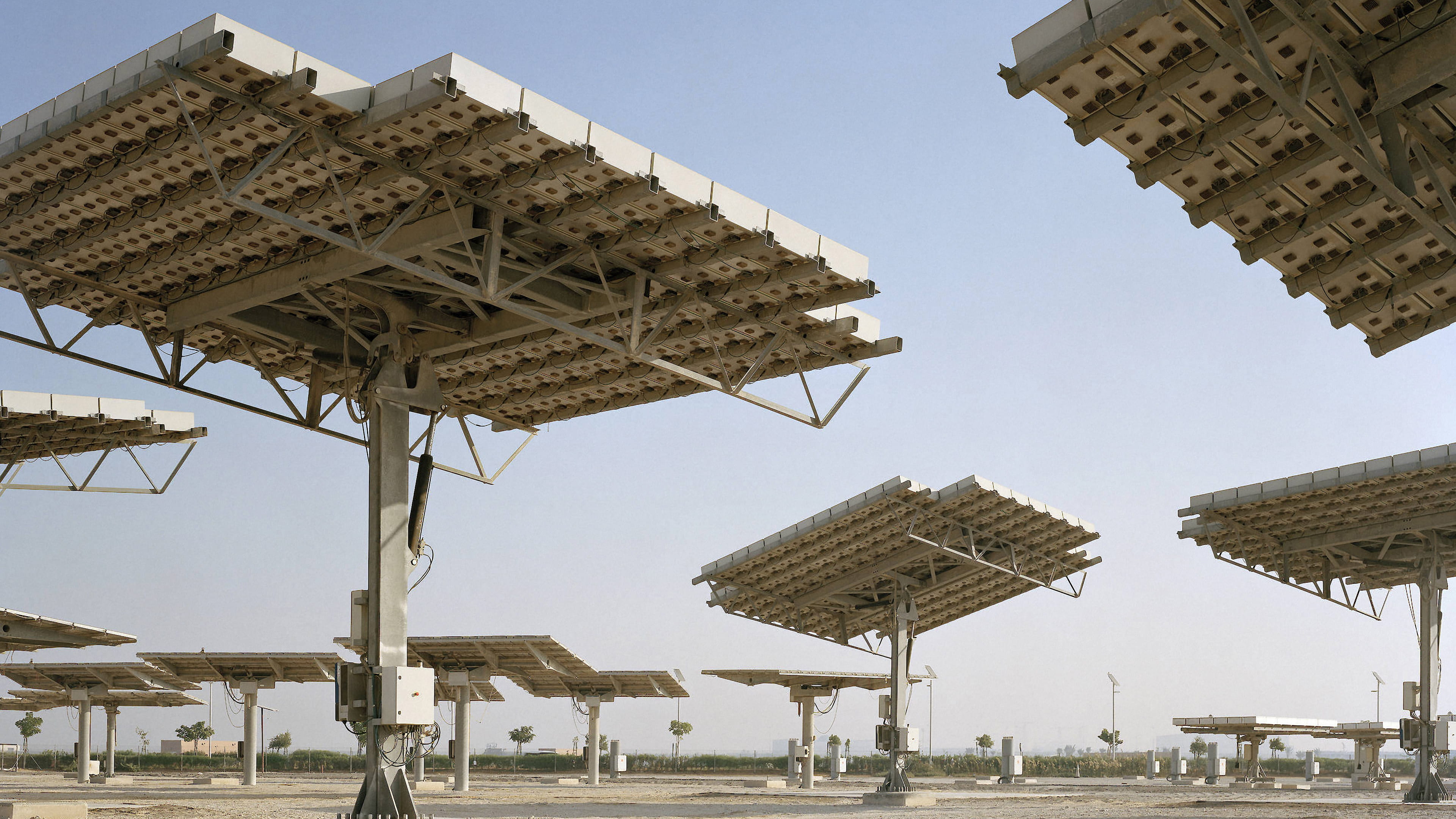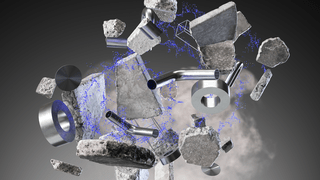Take a look at the world around you: the building you’re sitting in, the screen you’re looking at, the clothes you’re wearing, the vehicle that’s going to take you to your next appointment.
They are all things made by human beings.
There are more different types of “things” on this planet than there are organisms. As a comparison, there are at least 8,000 different “species” of mobile phone alone, while the number of currently recognised species of mammal is registered at 6,495.
And all those “things” are made out of something.
Only, we almost never think about what. Take something as simple as a pencil. Can you name the four base materials from which it is made? How about the 100+ materials making up the 400 parts of the cheapest toaster on the market?

Materials are the building blocks of our society, but we almost never think about them. “Even a diligent reader of economic news may go for days without seeing any reference to materials that form the physical foundation of modern civilisation,” scientist Vaclav Smil writes in his latest book Growth: From Microorganisms to Megacities.
And yet, our relationship with those very materials is more important today than ever before. Of all the materials that we build our civilisation with (wood, aluminium, paper, all manner of metals, silicon – the list goes on and on), there are four that stand out due to the tremendous impact that they have on society and the environment.
I’m talking about concrete, steel, fertilisers and plastic. Take any one of these four away, and our society would look fundamentally different.
At the same time, these four materials are particularly polluting. The production of concrete and steel, taken together, is responsible for 15% of worldwide CO2 emissions. Synthetic ammonia, the primary component in fertiliser, is the main culprit behind the disruption of the natural nitrogen cycle. Plastic ends up in the sea, where it is slowly replacing all marine life. And the production of these four materials combined accounts for over 10% of worldwide energy consumption – most of it generated from fossil fuels.
It’s the Catch-22 of the 21st century: the materials we build our civilisation with are destroying our civilisation at the same time.
But how did it come to this? And can we change it?
The archaeologist’s view: material culture ...
I’m an archaeologist at Leiden University in the Netherlands, where I study how we deal with materials and how people through the ages have developed their knowledge and skills about materials. Some of you might be asking yourselves why an archaeologist would be focused on themes and questions like these. You might be thinking of asking me: “Aren’t archaeologists mainly occupied excavating amazing new finds and peering into the distant past?"

No, archaeology is much more than that. It’s a way of thinking, and two perspectives within that way of thinking are crucial: material culture and the long term.
Material culture is what makes us human. The use of tools goes back to the very beginnings of our evolution. There’s even an early hominid named for it: Homo habilis , literally the “handy man”.
Archaeology is a science that revolves around how humans use materials. That’s by necessity, because for about 99.9% of our history we have had no written sources to go on – only artefacts (archaeologist lingo for the things that people make and use). All these things together make up a material culture, the lens through which archaeologists study and understand societies, both in the present and in the past.
Show me your things, and I’ll tell you who you are at the civilisation level.
… and long term
But how unique are we humans, really, in our use of materials? Don’t chimpanzees use tools, too?
Yes, they do. Actually, there’s a whole litany of animals that makes and uses tools. Crows, for example, are known to make hooks to lift food from a pipe. But no crows, and no chimpanzees for that matter, make a stockpile of tools for use in the future.
This is another truly human characteristic: we can plan ahead – Homo prospectus .
The problem is, as it turns out, that we’re not even remotely good at it.
Looking beyond our own generation is something that doesn’t come easy to us
Looking beyond our own generation is something that doesn’t come easy to us. For most people around the world, the time horizon in our heads is 15 to 20 years; after that, the future is a mystery.
We are hardwired to think in the long term, but the capacity to oversee more than 25 years (let alone hundreds or even thousands of years) is something that has to be trained.
That’s something you learn as an archaeologist.

It gives you a perspective on the slow but fundamental processes that have shaped and changed our societies, and even made societies disappear, because there comes a day when a society’s time is up. The Bronze Age? Over. Roman Empire? Gone. Mayan culture? Lost. The Akkadian Empire? Fallen and forgotten. Sometimes, we see that climate change played a role. Archaeology also contains a lesson in humility. No civilisation in history – no matter how great – can be assured of infinite persistence. But the people don’t just disappear.
The human species proves to be very resilient. Give us enough time, and we can recover from almost anything. Times change; cultures change. If 1 January 2051 comes around and we haven’t achieved our climate targets, we’re not all going to suddenly drop dead. But things might start to get ugly, and that means that making our society sustainable really is pretty urgent. However, the essence of the problem isn’t just about time, or even money. When you get right down to it, the transition to a sustainable society is about how we deal with materials.
Growth and materials are inextricably linked
No scientist has been more engaged with this issue than Vaclav Smil, the author I mentioned earlier. Smil is a man with 40 books to his name, all about our use of materials, resources and energy, and all of them bursting with facts and figures.
Smil is a diehard realist, and among climate scientists has earned the nickname “slayer of bullshit”. Asked about that appellation, he is blunt: “I’ve never been wrong on these major energy and environmental issues because I have nothing to sell.”
At 600 pages, his latest book Growth: From Microorganisms to Megacities is a weighty tome with a simple message: growth has to stop. “The economists will tell you we can decouple growth from material consumption, but that is total nonsense,” he notes in an interview with the Guardian.
‘The economists will tell you we can decouple growth from material consumption, but that is total nonsense’
And Smil is not the only one saying this. One after the other, researchers –from Ha-Joon Chang to Kate Raworth – are arguing that the economy and materials are inextricably interconnected. The idea that today’s economy is made primarily of services or knowledge is the greatest fairytale of our time. In the end, it comes down to brute material forces.
So, if we want to change the relationship between people and the planet, the first thing we have to do is understand another relationship: the one between people and materials. Right now, there’s no other way to put it – it’s an abusive relationship.
But this is something that almost no one in the media is talking about.
That’s why I decided to start investigating our material culture, which I will be doing in the months ahead. In a series of five articles, I’ll be showing how four materials – concrete, steel, fertiliser and plastic – have become the fundamental building blocks of our society and why we urgently need to replace them.
I’m making a deliberate choice to write about materials rather than resources. Very few of us have ever held iron ore or crude oil in our hands, but we all know what a fork made of steel or plastic feels like. We are surrounded by concrete walls every day without perceiving the sand, gravel and cement that goes into them. We have opinions about steel and concrete: steel is cold, concrete is grey. For most people, ammonia is a gas that you might read about in the newspaper, but fertiliser is something we’re familiar with, even if only in the form of the little sachet of plant food that we mix into the water for our bouquet of flowers. We relate to materials, not the resources they are made from.

That relationship – how we deal with materials – is what has to change. If we keep going the way we are now, the day will come when the Netherlands is underwater, Australia is permanently on fire and there are hundreds of thousands of climate refugees wandering the Earth seeking refuge. If we want to preserve our global civilisation, we need to transition to a sustainable, circular economy.
But the problem with these four building blocks of our society is perhaps not even how much pollution they represent. The real problem is how irreplaceable they are.
That’s why I’m going to start looking for alternatives.
In this, I would welcome your input. If you’ve built your house from wood or loam rather than concrete, I’d like to hear from you. If you can suggest an alternative to plastic, or if you’re a farmer who has eliminated ammonia-based fertilisers from your business, I want to hear your story. And if you have any other ideas about how we can change the way we use materials, let me know in the contributions section below.
Translated from the Dutch by Kyle Wohlmut.
Dig deeper
 Renewables are cheap and effective. Now, let’s make them just and humane too
The technological chapter of climate transformation can be whatever we choose to make it. If we allow it to be a bulldozing, profit-driven enterprise, the energy transition will fall apart – ratcheting impacts of climate change.
Renewables are cheap and effective. Now, let’s make them just and humane too
The technological chapter of climate transformation can be whatever we choose to make it. If we allow it to be a bulldozing, profit-driven enterprise, the energy transition will fall apart – ratcheting impacts of climate change.


